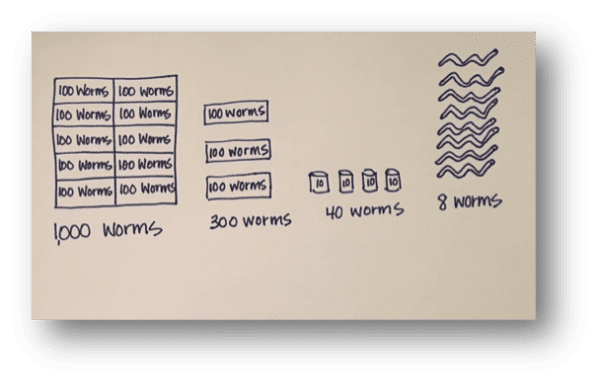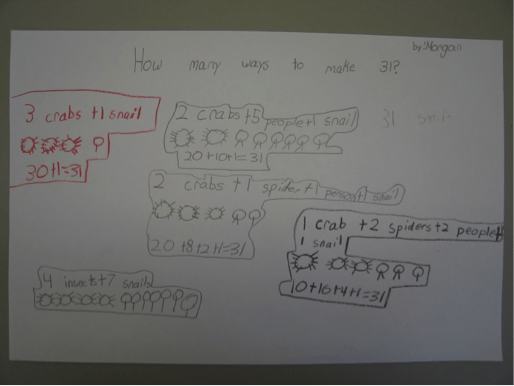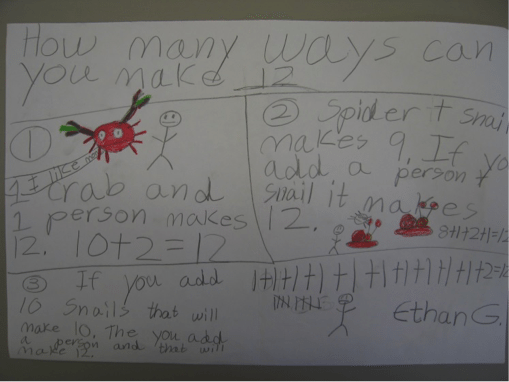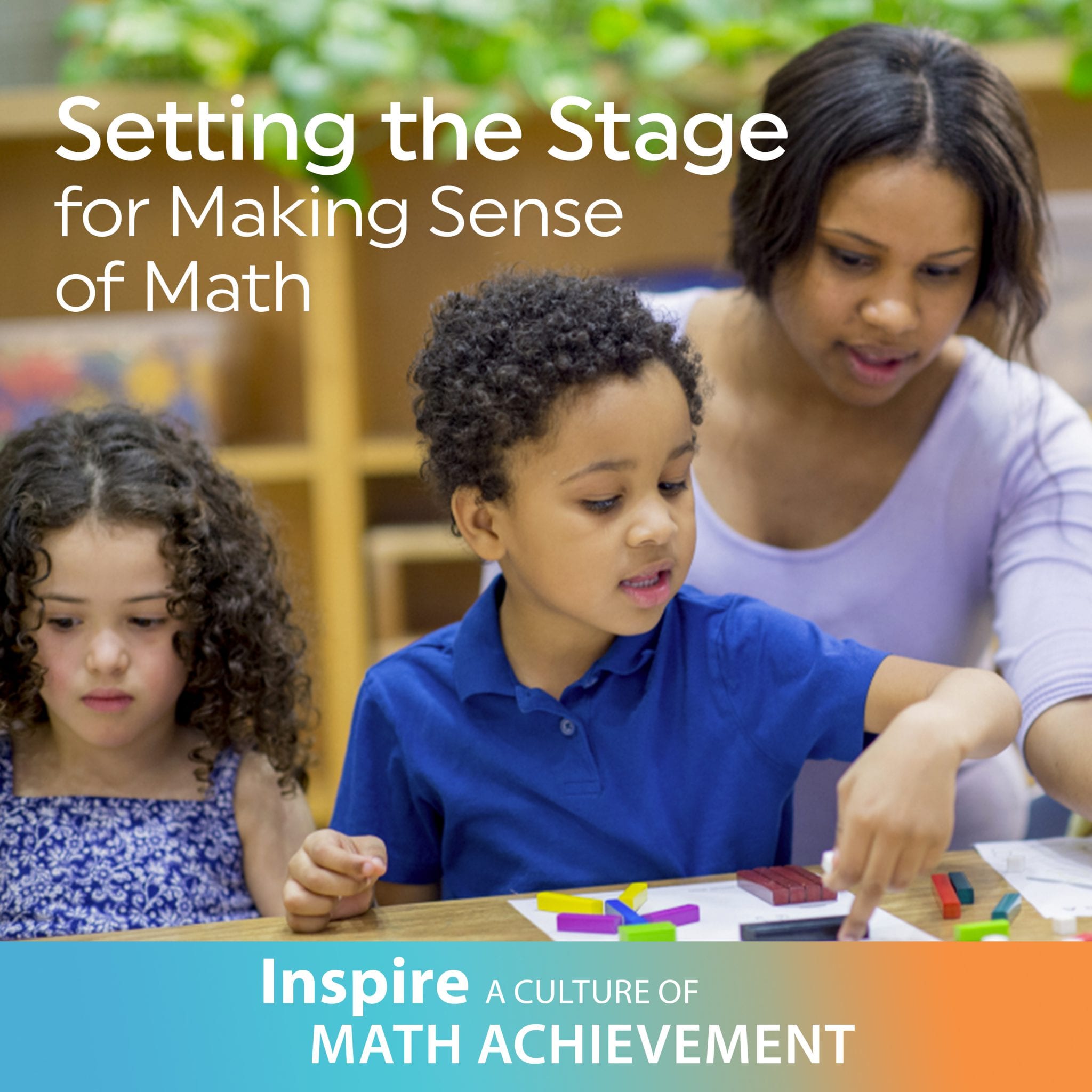Setting the Stage for Making Sense of Math is the second in a four-part blog series on inspiring math achievement in the classroom. To read the first blog post, head over here.
At the beginning of a unit on decimals, I wanted students to connect to what they already knew about whole number place value. I passed out large sheets of construction paper and asked them to draw a picture of the number 1,348. To better understand students’ thought processes, I also sat down with a piece of construction paper and started drawing a picture of my own. I thought about what I was drawing so that I could add on some decimal places to my number and further represent it in my picture later in the lesson. I hoped that this would demonstrate for students the relative size of each place value. I decided to use worms. (What’s more fun than a diced-up worm when we get to decimals?) My picture looked something like this:

I walked around the room and was stymied by what I saw on students’ papers…every single student drew bubble letters for the number and decorated each digit. So much for connecting to what students already knew. I had my work cut out for me!
In my last post, I shared about creating a culture of risk taking in the mathematics classroom. When the environment is right, we are better equipped to have students reason and make sense of the math they learn. The Reasoning and Sense-Making category below of the Instructional Practices Inventory, describes teacher and student behaviors when reasoning and sense-making are part of the mathematics classroom.
REASONING & SENSE-MAKING |
|
|---|---|
Teacher Best Practice |
Student Learning Practice |
| Selects rigorous learning experiences. | Persevere in making sense of rigorous problems. |
| Makes learning experiences accessible to all students without compromising the rigor in the problem. | Seek out multiple approaches to solving a problem. |
| Expects students to justify their reasoning for all answers, whether correct or incorrect. | Use multiple representations when solving problems such as symbols, diagrams, graphs, words, etc. |
| Selects learning experiences that represent a balance of conceptual understanding and procedural fluency. | Understand math concepts and use procedures appropriately. |
| Use appropriate tools strategically, including mental calculations, that fit the situation. | |
| Look closely to discern a pattern or structure. | |
My classroom story above clearly demonstrates that students did not understand the math concept and I couldn’t even begin to have them look closely to discern the pattern and structure of our place value system because their drawings were useless for this purpose. They were not reasoning and making sense of math. They were unintentionally doing an art project!!
In contrast, I reflected on a successful lesson from the past; the kind that allowed me to help students build true understanding of important mathematical concepts. Two instructional strategies came to my mind that made this lesson successful:
- Allowing students control over the level of difficulty (From How to Differentiate Your Math Instruction, Grades K–5 by Dacey,L., Lynch, J., & Salemi, R. (2013, Math Solutions, Sausalito, CA, 113)
- Having students show their answer in more than one way
I used the book One is a Snail and Ten is a Crab by April Pulley Sayre and Jeff Sayre. This is a fun counting by feet book and it can be used for many different math lessons. Students chose the number to fill in the blank: “How many ways can you make ______?” I asked them to use words, pictures, and numbers to show their answer based on the context of the story.
Here are some samples of student work:



By asking students to represent their thinking in words, pictures, and numbers and allowing students to choose the level of difficulty, students were challenged to reason and make sense of composing and decomposing numbers at a level that was accessible to them. The use of these two strategies made learning experiences accessible to all students without compromising the rigor of the problem.
My students who had trouble representing 1,348 were not thinking about how the number represents a quantity of something. If I want students to use decimal notation for fractions with understanding, I need to set the stage for them to make sense of these numbers. They need physical experiences and contexts. If I want them to be able to compare two decimals by reasoning about their size, they need to have visuals in their minds rather than following rote procedures for comparing. Otherwise, they will just continue to see numbers as labels and digits to color in rather than ways to show quantities.
What kinds of experiences do you provide for students to help them reason and make sense of numbers?
 Mary Mitchell designs and provides K–8 professional development for district-level administrators, school-based math leadership teams and teachers across the country. Her main priority is the students and teachers that she serves. Find Mary on Twitter at @marymitchell.
Mary Mitchell designs and provides K–8 professional development for district-level administrators, school-based math leadership teams and teachers across the country. Her main priority is the students and teachers that she serves. Find Mary on Twitter at @marymitchell.

 All Blog Posts
All Blog Posts
Comments